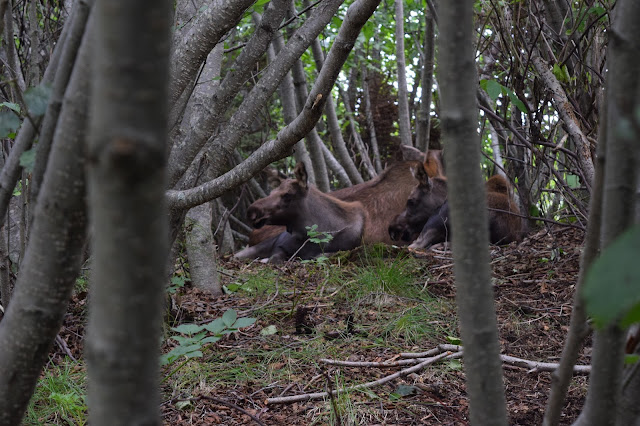Although we had been on one dog cart ride, when Cliff found out the the Seavey dog kennels were in Seward, we had to go. Dan Seavey lives in Seward and was instrumental in starting the Iditarod Race. Mitch, his son, also lives on the Kenai Peninsula, won the race 3 times. His grandson, Dallas, lives near Fairbanks and has won the race 4 times. Quite a dynasty. Above is Hugo. He's not a sled dog. Huskies don't make good sled dogs. Hugo was a movie star, but I can't remember what movie it was. I do know that he kissed Drew Barrymore once.
It's fun watching them hook up the dogs. The lead dog was on the right front. They always put a dog on the left next to the lead dog, that they believe will make a good lead. The dogs learn from each other the commands.
We got to hold these adorable pups. This was a litter of four.
One of Mitch Seavey's sleds. They are very light but strong and flexible. The pot on the left is what they use to heat water to thaw out the dog food, and also to heat the riders food during a race.
One of Mitch's trophies.
A little less than 100 dogs in Mitch's kennel. Our tour guide was a young woman training for the race. She will run a shorter qualifying race this winter.
Picture was taken in 1911 in Seward when dog sleds were used for transporting various things between Seward and Nome.
Picture of this years winner, Dallas Seavey


















































